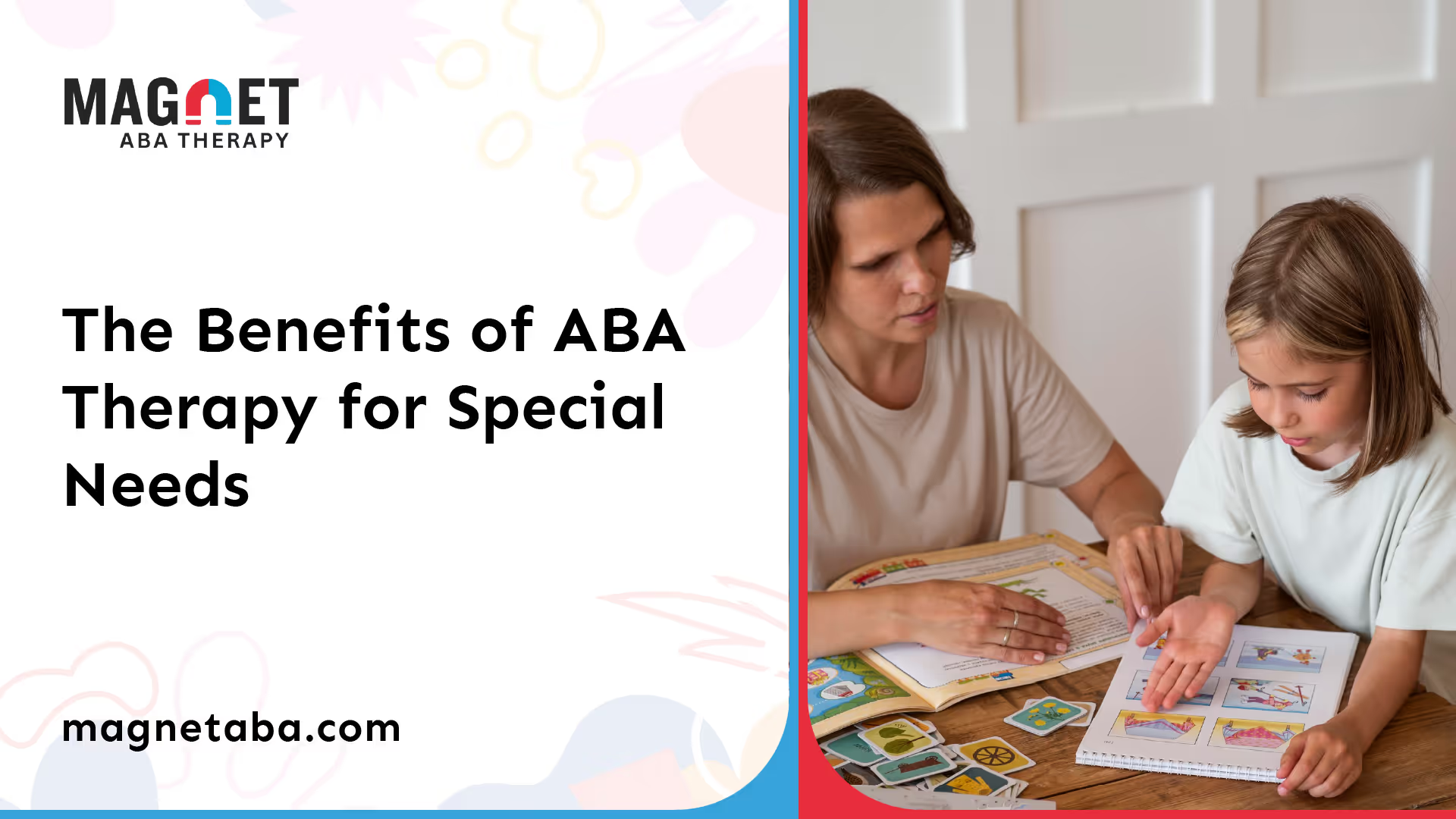
Understanding ABA Therapy
Applied Behavior Analysis (ABA) therapy is a widely recognized approach used to support children with special needs, particularly those diagnosed with autism. It aims to help children improve various skills, including social skills, communication patterns, fine motor skills, grooming, academic abilities, and even simple tasks like maintaining a clean and organized room.
Rooted in the principles of operant conditioning, ABA therapy is based on the work of psychologist B.F. Skinner. Skinner's theory emphasizes that behavior can be controlled by altering the consequences that follow it.
This means that positive reinforcement can encourage desirable behaviors, while negative consequences can reduce unwanted actions.
A key element of ABA therapy is the individualized approach it employs. Each therapy program is tailored to the specific needs, skills, interests, and family situations of the child.
This customization is typically overseen by a board-certified behavior analyst (BCBA), who designs and monitors the therapy programs to ensure effectiveness.
History and Development
ABA therapy has a rich history, with its application for children with autism and related developmental disorders beginning in the 1960s. Since then, it has evolved significantly, becoming a primary intervention method for addressing the challenges faced by children on the autism spectrum [2].
Over the years, ABA therapy has expanded its techniques and practices, supported by ongoing research and advancements in understanding autism. It has also grown to include various professionals, such as registered behavior technicians (RBTs), who are trained and supervised by BCBAs to work directly with individuals, assisting them in practicing skills and achieving their individual goals.
With its foundation in behavior science, ABA therapy continues to adapt to meet the diverse needs of children with autism. Parents seeking effective strategies and support for their children can explore various aspects of ABA, including its applications for tantrums and meltdowns, peer interaction.

Techniques in ABA Therapy
ABA therapy employs various techniques to help children with special needs, particularly those diagnosed with autism. Two of the most prominent methods are Discrete Trial Training (DTT) and Antecedent-based Interventions (ABI).
Discrete Trial Training (DTT)
Discrete Trial Training (DTT) is a fundamental teaching strategy within ABA therapy. This approach breaks skills down into small, distinct elements, allowing for more manageable learning experiences.
After each correct response to the discrete element being taught, positive reinforcement is provided.
This reinforcement encourages the child to repeat the behavior, fostering learning and retention.
This structured approach allows for repeated practice of skills, leading to mastery over time. DTT is particularly effective for teaching foundational skills in daily living, social interactions, and communication.
Antecedent-based Interventions (ABI)
Antecedent-based Interventions (ABI) focus on modifying the environment to reduce the likelihood of triggering unwanted behaviors. This technique emphasizes the importance of the setting in which learning occurs.
For example, teaching in an environment with minimal distractions can help a child focus better on the task at hand.
These strategies aim to create a supportive and conducive learning environment, which is essential for children with special needs. By addressing the antecedents of behaviors, parents and therapists can work together to promote positive actions while reducing challenging behaviors.

Implementation of ABA Therapy
Implementing ABA therapy effectively requires collaboration between parents and therapists. Understanding the roles and responsibilities of each party can enhance the overall success of the therapy.
Parent-implemented Intervention (PII)
Parent-implemented Intervention (PII) is a vital component of ABA therapy. It involves training parents to deliver ABA interventions alongside therapists.
Research indicates that PII is particularly effective for children on the autism spectrum.
Through PII, parents learn strategies to reinforce positive behaviors and reduce challenging behaviors in daily life. This collaborative approach provides consistency for the child, as they receive the same interventions at home as they do during therapy sessions.
Therapist Roles and Responsibilities
In ABA therapy, the therapist plays a crucial role in facilitating growth and skill development for children with autism. Typically, therapists are registered behavior technicians (RBTs) who work under the supervision of a Board Certified Behavior Analyst (BCBA).
Therapists are responsible for implementing treatment plans created by the BCBA. These plans are tailored to meet each child's unique needs and based on measurable goals developed through assessments and caregiver input.
By understanding the roles of both parents and therapists, families can create a supportive environment that enhances the effectiveness of ABA therapy for special needs. This partnership ultimately aims to foster independence and improve the quality of life for children with autism.
Effectiveness of ABA Therapy
The effectiveness of ABA therapy for special needs, particularly for children diagnosed with autism, is well-supported by various research studies. This section will explore the findings from notable studies and the long-term benefits observed in children who undergo ABA therapy.
Research and Studies
Numerous studies have established that intensive and long-term therapy using ABA principles significantly improves outcomes for many children with autism. More than 20 studies have shown gains in intellectual functioning, language development, daily living skills, and social functioning.
In general, children who receive ABA therapy tend to perform better than those who do not, indicating the effectiveness of this approach in helping children with autism learn essential life skills and lead more independent lives [5].
Long-term Benefits
The long-term benefits of ABA therapy are one of its most significant advantages. Many children continue to show improvements even after the therapy has ended. Research indicates that ABA therapy often leads to sustainable gains in various developmental areas.
- Social Skills: Over 90% of children treated with ABA therapy demonstrate improved social interactions, which often continue to develop over time.
- Communication Skills: Children frequently show enhancements in communication abilities, which contributes to their overall quality of life.
- Academic Performance: Studies reveal that children who participated in intensive ABA therapy are better prepared for academic success, achieving educational milestones comparable to their peers.
Parents can find great reassurance in the effectiveness of ABA therapy for their children. The approach is considered the "gold standard" among treatments for autism, primarily due to its proven outcomes and the lasting benefits it provides.
For more information on how ABA therapy can be applied in specific situations, consider our articles on ABA therapy for tantrums and meltdowns and ABA therapy and peer interaction.
Customization in ABA Therapy
ABA therapy is highly individualized, focusing on creating tailored treatment plans that suit the unique needs of each child diagnosed with autism. This customization is essential for achieving meaningful progress and ensuring that therapy is effective and relevant.
Individualized Treatment Goals
Individualized treatment goals are a cornerstone of ABA therapy. These goals are developed by Board Certified Behavior Analysts (BCBAs) through discussions with caregivers, direct assessments, and data collection.
The goals are specific, measurable, and designed to address the unique challenges faced by each child. For instance, ABA therapy targets can include improving daily living skills such as toileting, hygiene, feeding, and dressing.
These goals require mastery of foundational abilities and may take varying amounts of time to achieve. Factors such as the number of therapy hours per week, the child's current abilities, and parent involvement play a significant role in the progress made.
Tailored Programs
Tailored programs in ABA therapy are designed to meet the specific needs of the child and their family. These programs consider the child's strengths, weaknesses, and preferences to create a supportive learning environment.
Each program is unique and may include strategies for enhancing communication, social skills, and daily living skills.
For example, a child with difficulties in expressive communication may have a program that focuses on:
- Learning to greet others
- Asking for help
- Requesting items
- Answering questions
Programs may also involve teaching receptive language skills, helping the child to follow directions and understand vocabulary.
The flexibility of ABA therapy allows for ongoing adjustments to the program based on the child's progress and changing needs. This ensures that therapy remains relevant and effective.
Additionally, parents can collaborate with BCBAs to align therapy goals with the child's individualized education plans (IEPs), facilitating a more integrated approach to support [6].
By focusing on customized treatment goals and tailored programs, ABA therapy provides a comprehensive approach that enhances the potential for growth and development in children with special needs.
Controversies Surrounding ABA
Concerns and Criticisms
ABA therapy has garnered criticism from various groups, particularly autism rights and neurodiversity activists. Concerns have been raised regarding historical practices within behavior analysis, the current procedures utilized, and the goals targeted in ABA interventions.
Some activists believe that all ABA-based interventions can be abusive.
Several specific issues have been highlighted:
- Punishment-based Procedures: Critics argue that the use of punishment in some ABA methods can be harmful and counterproductive.
- Hours of Intervention: There are worries about the recommended number of hours of therapy, which can be extensive and may not consider the individual needs of the child.
- Perception of Rigidity: ABA is sometimes viewed as a rigid, formulaic approach that may not allow for the flexibility needed in individualized therapy.
- Impact on Individuality: Concerns exist about the selection of goals within ABA that could alter a child's individuality or personality, leading to outcomes that may not align with the child’s authentic self.
These criticisms suggest that while ABA therapy can be beneficial, it is essential for parents to consider the specific methods and goals of any ABA program for their child.
Addressing Ethical Issues
Ethical considerations are paramount in the discussion of ABA therapy. Critics express concerns about the potential for long-term negative outcomes associated with certain practices, including depression, anxiety, and PTSD.
Addressing these ethical issues involves several key strategies:
- Informed Consent: Ensuring that families are fully informed about the therapy methods and potential risks involved in ABA therapy.
- Individualized Goals: Focusing on tailored goals that respect the child's individuality and personal interests, rather than solely aiming to change behavior.
- Positive Reinforcement: Emphasizing positive reinforcement techniques over punishment to promote a supportive and encouraging environment.
- Monitoring and Feedback: Regularly assessing the effectiveness and emotional well-being of the child during therapy to ensure that the approach remains beneficial.
For parents considering ABA therapy for their child, it is crucial to engage with practitioners who prioritize ethical practices and are open to discussing concerns. Understanding the nuances of ABA therapy for autism spectrum disorder can help families make informed decisions that align with their child’s needs and values.
References
[1]: https://hiddentalentsaba.com/aba-therapy-techniques/
[2]: https://www.autismspeaks.org/applied-behavior-analysis
[3]: https://blueabatherapy.com/aba/aba-therapy-goals/
[4]: https://www.thetransmitter.org/spectrum/controversy-autisms-common-therapy/
[5]: https://insightstobehavior.com/blog/connection-aba-special-education-guide/

.jpg)










